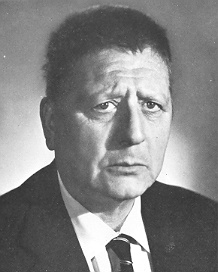Giorgio Amendola facts for kids
Quick facts for kids
Giorgio Amendola
|
|
|---|---|

Amendola in 1972
|
|
| Member of the Chamber of Deputies | |
| In office 25 June 1946 – 5 June 1980 |
|
| Personal details | |
| Born | 21 November 1907 Rome, Italy |
| Died | 5 June 1980 (aged 72) Rome, Italy |
| Political party | PCI (1929–1980) |
| Spouse | Germaine Lecocq |
| Relatives | Giovanni Amendola (father), Eva Kuhn (mother) |
| Occupation | Politician, journalist |
Giorgio Amendola (born November 21, 1907 – died June 5, 1980) was an important Italian writer and politician. He is remembered as someone who helped shape modern Italian politics. Amendola was born in Rome, Italy. His father, Giovanni Amendola, was a politician who opposed the government of Benito Mussolini.
Contents
Early Life and Anti-Fascism
Giorgio Amendola's mother was Eva Kuhn, an intellectual from Lithuania. His father, Giovanni Amendola, was a strong opponent of the fascist government led by Benito Mussolini. Sadly, Giovanni Amendola died in 1926 after being attacked by people connected to Mussolini's regime.
Giorgio secretly joined the Italian Communist Party (PCI) in 1929. After finishing his law studies, he began to speak out against Mussolini's government. This was a very dangerous thing to do at the time.
Fighting for Freedom
Because of his opposition, Giorgio Amendola was arrested. He was sent away to live in France, and later to Santo Stefano Island in the Pontine Islands. This was a form of punishment called exile.
In 1943, during World War II, Amendola was freed by resistance fighters. These were brave people who secretly fought against the fascist government and the Nazi occupation. Amendola then joined their movement.
A Career in Politics
After World War II ended, Giorgio Amendola became a member of the Italian Parliament. He represented the Italian Communist Party (PCI) from 1948 until he passed away in 1980.
In the 1970s, he became well-known as a leader within his party. He believed that the party should slowly move away from some of the ideas of Soviet Communism and Leninism. Instead, he thought they should work with more moderate political parties, like the Italian Socialist Party. This idea later became known as Eurocommunism.
One of his close allies was Giorgio Napolitano. Napolitano also served in the Chamber of Deputies and later became the President of Italy from 2006 to 2015. Napolitano considered Amendola a mentor.
A Life of Writing
From 1967 onwards, Amendola also became a writer. He wrote several important books. Some of his most famous works include:
- Comunismo, antifascismo e Resistenza ("Communism, Anti-Fascism and Resistance", 1967)
- Lettere a Milano ("Letters to Milan", 1973)
- Intervista sull'antifascismo ("Interview on Anti-Fascism", 1976, with Piero Melograni)
- Una scelta di vita ("A Choice of Life", 1978)
- Un'isola ("An Island", 1980)
His book Un'isola is often considered his best work. Giorgio Amendola died in Rome in 1980 at the age of 72 after a long illness. His wife, Germaine Lecocq, whom he met in Paris during his exile, passed away just a few hours after him. She had helped him write his final book.
Sources
See also
 In Spanish: Giorgio Amendola para niños
In Spanish: Giorgio Amendola para niños

